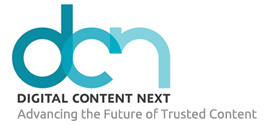Our recommended reads from around the web:
- AdAge: The $24 Billion Data Business That Telcos Don’t Want to Talk About (7 min read)
- Medium: May I Define Your Attention, Please? (7 min read)
- AdWeek: A First Look at Nielsen’s Total Audience Measurement and How It Will Change the Industry
- Pulse: Marketers and Publishers See Viewability from a Different Vantage Point (4 min read)
- AdWeek: We Brought Together the Major Players in the Ad Blocker War, and Here’s What They Told Each Other (17 min read)
- WAN-IFRA: The distributed content landscape: an overview for publishers – Part 1 (12 min read)
- CNN: Yahoo’s historic NFL live stream averages 2.36 million viewers (2 min read)
- Quartz: Ad blockers will destroy listicles and other dumb clickbait (5 min read)
- AdWeek: Are Ad Blockers an Invasive Species or a Catalyst for Innovation? (4 min read)
- MediaPost: Digital Fingerprinting Poses ‘Real Danger’ To Internet, Watchdog Tells FTC (2 min read)
- Medium: Blogging, Meet Medium. Please Procreate. (5 min read)

